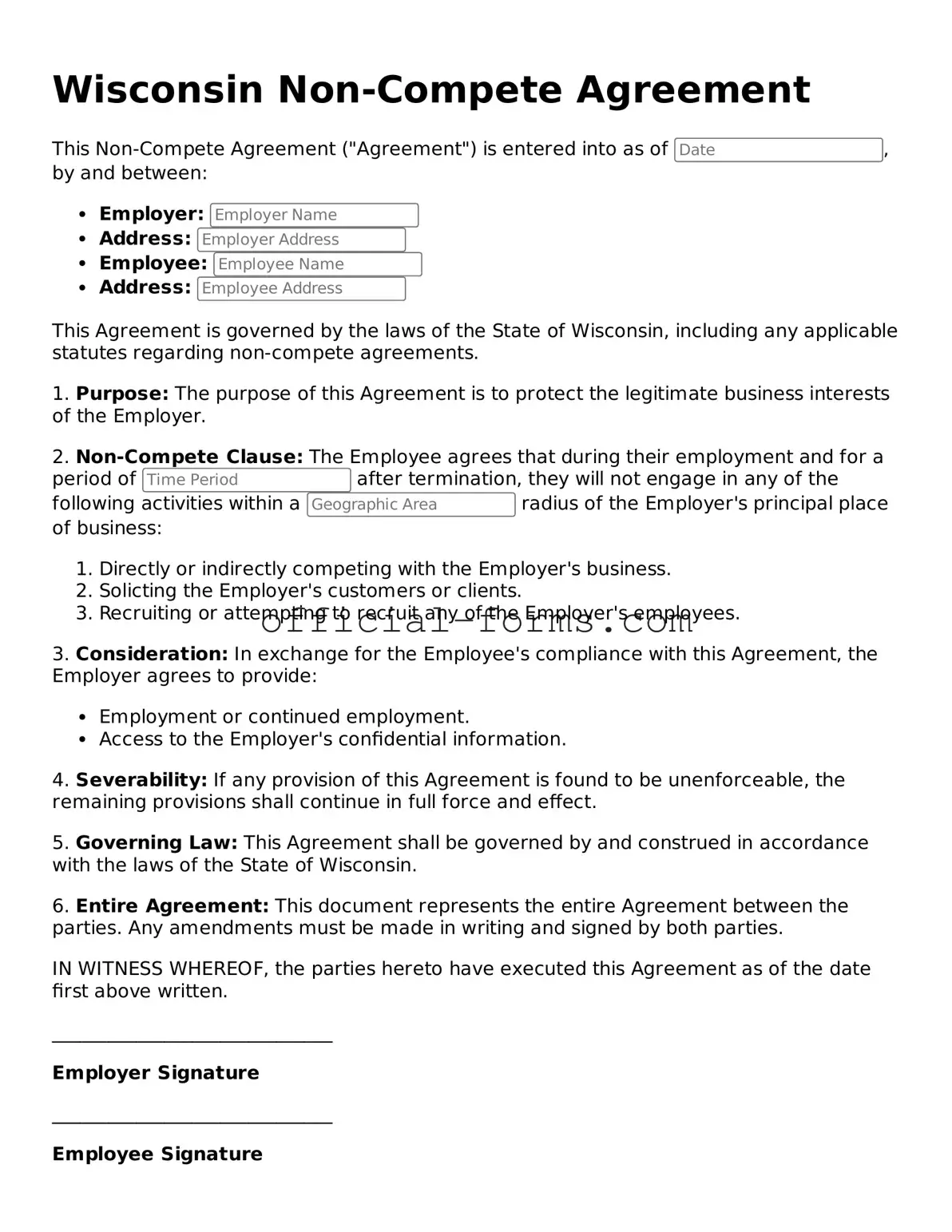In the realm of employment agreements, the Wisconsin Non-compete Agreement form serves as a crucial tool for both employers and employees. This document is designed to protect a company's proprietary information, trade secrets, and competitive edge by restricting an employee's ability to work for competitors or start a similar business within a specified timeframe and geographical area after leaving the company. Key aspects of this form include the necessity for clear definitions of what constitutes confidential information, the duration of the non-compete period, and the geographical limits within which the restrictions apply. Additionally, the form must be reasonable in scope to ensure enforceability under Wisconsin law, balancing the interests of the employer with the rights of the employee. Understanding these elements is essential for all parties involved, as they can significantly impact future employment opportunities and business operations. The urgency to address these agreements properly cannot be overstated, as failing to do so may lead to legal disputes and unintended consequences for both employers and employees.
